By Christina Helmick
One of the three main parts of the Prosper Waco mission is to help build an environment in which all members of our Waco community are able to improve their financial security. During our 2016 Annual Summit, Matt Meadors, President and CEO of the Greater Waco Chamber of Commerce, talked about upcoming collaborations and partnerships planned to help accomplish this part of the mission. One of those collaborations is now coming to fruition: Workforce Readiness Certification (WRC).
Local employers have reported for years that they need employees with good work readiness skills. The purpose of the WRC is to provide a certification that employers can trust to identify job candidates who have those important skills.
A development team including representatives from the Center for Occupational Research and Development (CORD), McLennan Community College (MCC) and the Greater Waco Chamber of Commerce (GWCC) began work on this project in January 2016. To make sure the certification would meet the need, the development team first met with a focus group of local employers to hear their top concerns regarding employee behavior and skill. The team also worked with the employers to collect specific, real-life case studies of situations in which workforce readiness skills would come into play at work.
The conversations with these employers were documented and that information was used to create a survey which was then emailed to 136 larger local employers. The results from this survey provided additional guidance for developing the certificate program. The development team then validated the findings with a follow-up meeting with employers.
Based on this work, the development team developed two certificate programs:
- Work Ethic: dependability, honesty and integrity, interest in working, commitment to improve, positive attitude & enthusiasm, and respect
- Being an Employee: attention to detail, taking ownership, listening and communication, meeting production goals, and teamwork
To obtain certification, cohorts of Job candidates participate in 24 hours of instruction (per certificate). The curriculum includes real-life scenarios directly from employers. One facilitator and six local employers will interact with each cohort group. Skill attainment is assessed through self-assessment, cohort assessment, facilitator assessment, and assessment by employers. Only those students whose cumulative assessment reaches a fixed level of proficiency are awarded a certificate.
For a full list of what the certification will include, please contact Dr. Richard Hinckley of CORD ([email protected]) and for a copy of the survey contact Frank Graves of McLennan Community College ([email protected]).
The first “pilot” cohort of WRC students will start later this month. Initial students will be selected by the Reintegration Roundtable (For more information about the Reintegration Roundtable contact Jamie Schmitt by email at [email protected]). The development team will use information collected from this group to fine-tune the curriculum before making it available community-wide.
Developing the Workforce Readiness Certificate was a collaborative effort. It could not have been done by one organization, but several organizations working together have developed a certificate program that will help our community build a better-prepared workforce. Through collaboration and partnerships, there are endless possibilities!
For more information about efforts like the WRC, please visit prosperwaco.org or call 254-741-0081.
 Christina Helmick is the director of communication at Prosper Waco. She is a recent graduate of Baylor University with a BA in Journalism, Public Relations & New Media. Originally she is from Washington, D.C., but has stayed in Waco post-graduation. She is an active mentor at J.H. Hines Elementary School, enjoys spending time with her family and watching Baylor football. Sic ’em Bears!
Christina Helmick is the director of communication at Prosper Waco. She is a recent graduate of Baylor University with a BA in Journalism, Public Relations & New Media. Originally she is from Washington, D.C., but has stayed in Waco post-graduation. She is an active mentor at J.H. Hines Elementary School, enjoys spending time with her family and watching Baylor football. Sic ’em Bears!
The Act Locally Waco blog publishes posts with a connection to these aspirations for Waco. If you are interested in writing for the Act Locally Waco Blog, please email [email protected] for more information.
By Robin McDurham
In a few short days, the teachers in Waco ISD will be giving our students hugs and high fives and send them home for summer. However, learning does not have to stop for ten weeks. There are several things families can do to engage the brain and prevent summer learning loss. Applying academic skills to everyday activities can keep the learning in the forefront. Wouldn’t it be great if this blog posts could start a conversation with the Act Locally community about how we keep learning alive during the summer? Here are a few of my favorites:
- If you are taking a road trip, consider listening to a book on tape together. If you want to push the learning, do a Google search for book discussion questions ahead of time. Focus on questions that require everyone in the car to consider what the author is trying to convey.
- Give the list making duties to the kids. By organizing and writing down items on grocery shopping list, packing list, and chore lists, children are using critical thinking skills and taking ownership of family responsibilities. The potential for learning increases when taking the lists further by creating a weekly meal plan, developing a budget, and charting progress.
- Have a yard sale or open a lemonade stand, and put your child in charge.
- Turn on the closed caption feature on your television to encourage reading along with the shows. When they get good at reading the captions, push them by turn off the sound.
Parents don’t have to prevent summer brain drain all by themselves. Several organizations offer learning opportunities for students during the summer. The short list provided below is a snapshot of opportunities provided by Waco ISD campuses and educators:
Elementary Schools
June 6th-June 30th (8:00 am to 3:00 pm- Monday through Friday). Language Acquisition Summer School for all current English Learners in PK and Kindergarten. The program will be presented at Bells Hill Elementary. We have a great plan for the children filled with intense direct instruction in literacy, language, math, and other disciplines! Transportation is available. Breakfast and lunch will be served. Contact the department at 254-755-9525 for more information.
June 6-8, 12-15, and 19th (8:00 am to 1:00 pm) J. H. Hines Elementary School – Summer Enrichment Program – J.H. Hines is partnering with the YMCA, and other organizations to offer exciting opportunities for students including Tours of McLane Stadium, The Cameron Park Zoo, Waco Wetland, Mammoth Site, World Hunger Relief Farm, Cameron Park, Mayborn Museum, and a Spectacular Science Day. Breakfast, lunch, and transportation will be provided.
Saturday, June 10, 2017 (2:00 pm – 3:30 pm) Author’s Alley at the Waco-McLennan County Library- Waco ISD teacher, Mary Evans, will present a lively reading of her book, Thunder and Lightning. She will talk to the kids about writing a book and what it’s like to be an author. There will be a fun craft for kids to make and take, too. Books will be available for purchase and signing. A percentage of the proceeds will benefit the Friends of the Waco-McLennan County Library.
June 12-15, 10 a.m.-noon – McLennan Community College summer camps- Cooking with the Rainbow – This four-day session will highlight stovetop-based recipes for pre-teens and teens. Main dishes, sides, and desserts will be featured while focusing on a “rainbow” of ingredients. Young chefs will be educated about making meals with a focus on both taste and nutrition. Your son or daughter may even offer to make dinner after this week is done! For ages 13 to 17. Class will be taught by Waco High teacher, Wendy Moulds. Cost: $79 Class ID: AVC 5245.01
June 26-July 14 (8:00 am to 3:00 pm- Monday- Thursday) West Avenue Elementary is hosting VOICE Inc. summer camp from 8am-3pm for students enrolled in 1st through 5th grades.
July 10-15 Waco High School Overture Summer Theatre Camp for Kids – Students entering the 2nd-9th grades and may be enrolled in schools other than WISD. We’re producing 101 Dalmatians. We still have “spots” available. Email klynn.childress@wacoisd.org for more information.
Saturday, August 12 (9 am – noon) Family Fest – food, fun, vaccinations & information, school supplies and backpacks for registered WISD students
Date and times to be announced. The Waco ISD Education Foundation awarded a grant to Kendrick Elementary to refurbish the existing outdoor classroom that had become overgrown and unused. Much of the work will be done this summer so that Kendrick students can start using the garden in the fall. Projects such as building a deck for seating, constructing raised garden beds, and establishing an area for a butterfly garden are on the agenda. Skilled workers and volunteers would be much appreciated. Local businessman Thomas Arnold, the owner of Central Crushed Concrete, has graciously donated the materials needed for a walking path. This will be another task that will require many hands. Work dates have not been determined at this point, but anyone interested in helping can call Dina Hoffman at 254-495-0070.
Middle Schools
 June 12-15 (12:30-2:30 pm.) McLennan Community College summer camps Pasta and Sauces for Teens – Get a taste of Italian as you learn to make a different sauce for each day of this four-day cooking session for preteens and teens. You will learn about different pasta types and salads as well as finish off your meal by making an Italian dessert! For ages 13 to 17. Class will be taught by Waco High teacher, Wendy Moulds. Cost: $79.
June 12-15 (12:30-2:30 pm.) McLennan Community College summer camps Pasta and Sauces for Teens – Get a taste of Italian as you learn to make a different sauce for each day of this four-day cooking session for preteens and teens. You will learn about different pasta types and salads as well as finish off your meal by making an Italian dessert! For ages 13 to 17. Class will be taught by Waco High teacher, Wendy Moulds. Cost: $79.
June 26- July 20th (9:00am-4:00 pm Monday through Thursday) Bulldog Summer Enrichment Program at Indian Spring Middle School for students attending Indian Spring in the 17-18 academic year. Activities include a robotics program, kayaking, rock climbing, swimming, leadership training, team-building, arts & crafts, tennis, soccer, kickball, basketball, gardening, hiking, educational trips, and more.
June 6th – July 20th excluding July 3rd & 4th (1:00 pm – 5:00 pm) – Texas ACE Summer Camp at Carver Middle School campus and Doris Miller YMCA for swimming. The camp is for Carver students who just completed 6th, 7th, and 8th grades. Activities involved: swimming (at the YMCA), gardening with World Hunger Relief, Zumba, Y fitness, reading club, and art.
High Schools
June 5-8 and 12-15 University High School STEM team is hosting Project SOAR a two-week Project Based Learning program that incorporates fun, hands-on activities while learning the important skills needed in Pre-AP, AP, and Dual Credit classes. The two-week program is based on real-world experiences and helps you to develop creativity, critical thinking, problem-solving, and teamwork. The theme for this summer is “Destination Mars.” The program is for students in the UHS 2019, and 2020 cohorts Call Ms. Stephanie Bailey at (254) 756-1843 ext. 2196 or Mr. Jeffrey Cunningham at (254) 756-1843 ext. 2124 for more information or to register.
July 17-20 8:00am to 1:30pm. Freshmen institutes- Waco High School and University High School will be hosting Freshman Institutes for incoming 9th graders to introduce them to high school life. The class of 2021 will learn about study skills required for success, earning credit, getting involved in campus activities, and building the relationships that will help them navigate the next four years of learning.
A few additional plugs
Monday, July 24: 8 a.m. – Registration for the 17-18 school year begins. Parents may register online or at campuses.
Summer Meal Program – Any child up to 18 years old can participate in the Summer 2017 program by showing up at one of the campus, city or mobile sites on the days and during the meal time(s) indicated on the SFSP schedule. Sites will be open all summer from June 5, 2017, through August 14, 2017. Please note the dates and times of service at each location. Meals will not be served before or after the scheduled serving times. Meal times and dates are subject to change. Some sites will be closed on Monday, July 3, 2017, and Tuesday, July 4, 2017, in observance of Independence Day. Click here for the list of Summer Meal Program Sites.
So now for the action part for all of us Act Locally faithfuls. Let’s see how many folks can add to this post by sharing ideas and events for preventing summer learning loss. Add a comment and pass it along. There are roughly 70 days of summer can we shoot for a new learning idea or event for each day?
 Robin McDurham is an assistant superintendent with Waco ISD. Although she and her husband Doug are currently enjoying life as emply nesters, they had a great experience as Waco ISD parents for 16 years with their sons Zane and Dakota. Robin is passionate about providing opportunities for students that make learning relevant. Contact information: Robin McDurham, Ed.D., Area Assistant Superintendent, Waco ISD. 254-755-9601. [email protected].
Robin McDurham is an assistant superintendent with Waco ISD. Although she and her husband Doug are currently enjoying life as emply nesters, they had a great experience as Waco ISD parents for 16 years with their sons Zane and Dakota. Robin is passionate about providing opportunities for students that make learning relevant. Contact information: Robin McDurham, Ed.D., Area Assistant Superintendent, Waco ISD. 254-755-9601. [email protected].
by Estela Smith
I appreciate the efforts of the hard-working folks of Waco, especially those in the nonprofit realm. Many success stories prove that their hard work is paying off. Like in many communities, however, the need is great. The non-profit organizations cannot do everything on their own. Volunteers can help. I can help! Until recently, through Assistance League of Austin, I contributed my talents and energy, to volunteer in effort’s that served the local community…of Austin. Now my husband and I live in the Waco community and I want to contribute in this community.
I am a fan of Assistance League. I believe they make a difference, and I think it could be a benefit to start a chapter here in Waco. As the Waco area grows and becomes home to more folks, the need for additional services also increases. Assistance League could come alongside existing organizations to help serve the folks of McLennan County. Assistance League could help support the continuing effort to ‘make Waco a better place to live’ by recruiting and tapping the potential of volunteers to help those less fortunate to a better, more meaningful life.
Assistance League® is a national nonprofit organization, with 120 local chapters across the U.S. including Hawaii. It is a member based all volunteer organization. The purpose of each chapter of Assistance League is to meet the needs of the local community. They work through charitable giving programs helping one child, one young person, one senior, at a time.
For some members volunteering is their social connection. Some of us are recently retired or widowed and are now available to volunteer and explore new interests. We are busy volunteers, but we also enjoy each other’s company. As a member-volunteer in the Assistance League of Austin, I met and worked with several fascinating and very giving souls, both men and women, committed to the local community effort. The volunteers are from various backgrounds. Many, for example, are retired teachers. After having seen the positive effects of the Operation School Bell® Program as teachers, they now participate in the giving side of Assistance League.
Assistance League of Austin has been serving the community for the last 45 years. The chapter’s Toy Cart Program really held a special place for me. As a preemie, my own daughter had been in the hospital for an extended period of time. I always appreciated the solace of an encouraging nod and a small stuffed toy, for baby. Now, it is my turn to give a smile and a game or toy and a book to the patient and their family. Fact: The Toy Cart Program donates and delivers toys and books to more than 18,700 patients at children’s hospital every year! Besides toys, Assistance League volunteers provide pillowcases, embroidered blankets, and onesies for preemies at the children’s hospital in Austin.
Anne Banning founded National Assistance League® in 1935. It was the first nonprofit, nonpolitical, nonsectarian organization founded in the West to recognize the potential of volunteers in helping those less fortunate to a better, more meaningful life. We now have over 23,000 dedicated volunteers in 120 chapters nationwide (10 chapters in Texas). With 1.5 million individuals served, 3.2 million service hours and $38 million returned to local communities. We do make a difference!
The sustainable and charitable giving programs of the Assistance League are powered by volunteers. Most importantly, Assistance League serves the local community. All funds raised in the community stay in the community!
I loved volunteering with the Assistance League in Austin and I would love to help start a chapter here. Would you be interested in helping get a chapter started in Waco/McLennan county? If so, please contact me, Estela Smith by email at [email protected]. For more information about bringing Assistance League to McLennan County email: [email protected] or visit our national website: www.assistanceleague.org.
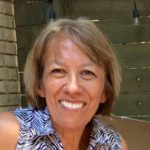 Estela Smith is a native Texan. Born and reared in Dallas. Estela and her husband lived on the West Coast for 35 years; now they own their home in the Cedar Ridge neighborhood of Waco. They are grateful for family in the Greater Dallas area and in Austin.
Estela Smith is a native Texan. Born and reared in Dallas. Estela and her husband lived on the West Coast for 35 years; now they own their home in the Cedar Ridge neighborhood of Waco. They are grateful for family in the Greater Dallas area and in Austin.
One of her favorite quotes is, “If you want to lift yourself up, lift up someone else.” (Booker T. Washington) Contributions and edits courtesy of A. Neish, past president, National Assistance League.
By Ashley Stephens
The main focus of the Children’s Garden and Outdoor Classroom is to offer children and adults the opportunity to connect with and learn about gardening, nature, and sustainability. The Children’s Garden and Outdoor Classroom offers ongoing gardening and outdoor classes for children, workshops for adults, and community events.
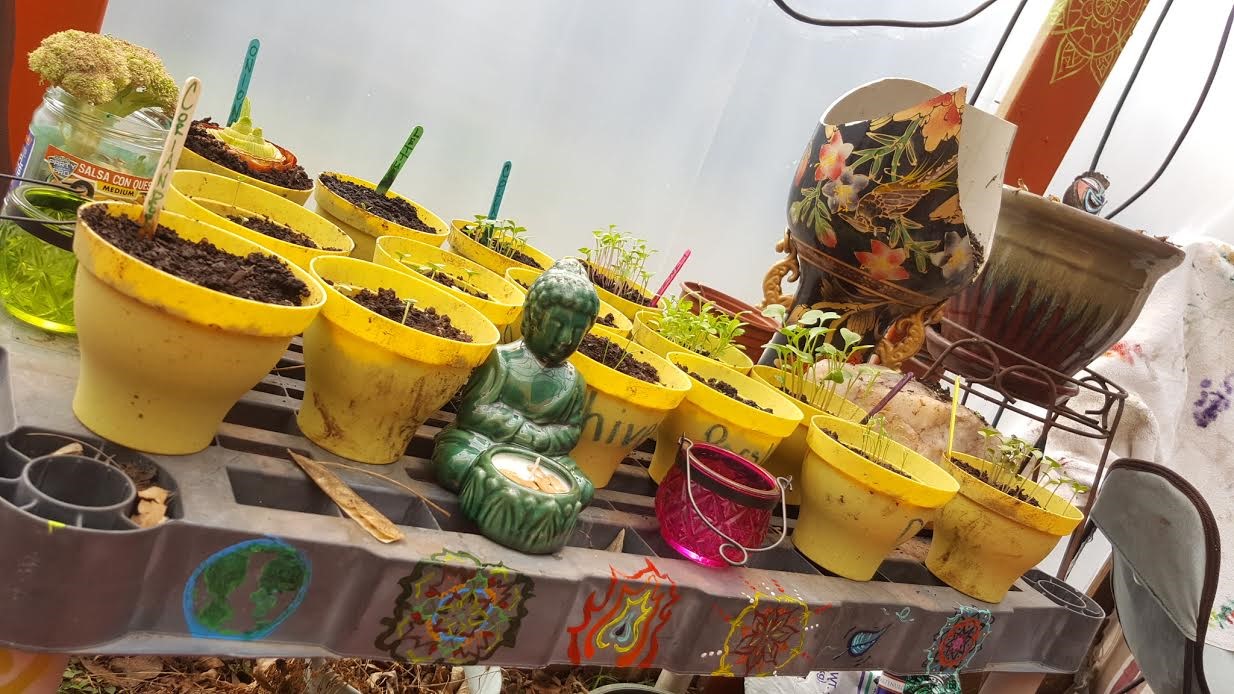 I started the Children’s Garden and Outdoor Classroom in Fall of 2015 after not finding anything like it available locally for my son that I homeschool. We enjoyed gardening at home but he wanted to garden and learn with friends. More and more public and private schools are getting gardens, gardening classes, and clubs but there wasn’t a place homeschoolers or those without access to a garden could go for that. I envisioned more than just a “community garden” where people garden plots independent of each other, but instead a garden that brought people together to learn, grow, explore, make new friends, and play on a regular basis.
I started the Children’s Garden and Outdoor Classroom in Fall of 2015 after not finding anything like it available locally for my son that I homeschool. We enjoyed gardening at home but he wanted to garden and learn with friends. More and more public and private schools are getting gardens, gardening classes, and clubs but there wasn’t a place homeschoolers or those without access to a garden could go for that. I envisioned more than just a “community garden” where people garden plots independent of each other, but instead a garden that brought people together to learn, grow, explore, make new friends, and play on a regular basis.
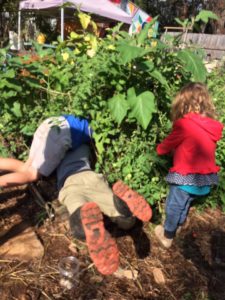 The garden and the outdoors in general are the perfect place for anyone, especially children to learn life-long skills, natural sciences, and build confidence in their ability and place in the natural world. I started with homeschool classes because I homeschool, but now I offer a preschool “lil sprouts” class, an after school club and a lot of the parents attend the class with their children too, so it really has become something for the whole community.
The garden and the outdoors in general are the perfect place for anyone, especially children to learn life-long skills, natural sciences, and build confidence in their ability and place in the natural world. I started with homeschool classes because I homeschool, but now I offer a preschool “lil sprouts” class, an after school club and a lot of the parents attend the class with their children too, so it really has become something for the whole community.
Some of the families that attend The Children’s Garden and Outdoor Classroom have acres of land, with animals, and a big garden. They come because they want to learn more, share what they know, and connect with others with similar interest. Some of the families that attend The Children’s Garden and Outdoor Classroom live in apartments in Waco with no yard at all. They attend because they want their children to still get to have wonderful outdoor experiences in the garden picking vegetables, caring for chickens, and hiking in the woods. A lot of the families fall somewhere between the two. I love the mix of families that attend classes and the community it creates.
What type of programs do we offer?
The Children’s classes are divided in sessions in the fall and spring. Each class meets once a week for 6-12 weeks. We also offer short summer and winter day camps for children. The garden has raised gardening beds, a fairy garden, a wildlife garden, compost bins, a key hole garden, chicken coop, worm composting bin, a play area with an awesome tree house that the children enjoy every class.
 This past spring we offered a four hour nature school for homeschoolers. In this class we hiked in the woods and explored local plants and animals, read stories, and journaled our new discoveries, then had lunch in the park, after which headed over to the garden where we planted, watered, and harvested the garden, made garden fresh snacks like pizza, salsa, and hand cranked ice cream, cared for our chickens, harvested honey, made cob fairy houses, and learned about composting.
This past spring we offered a four hour nature school for homeschoolers. In this class we hiked in the woods and explored local plants and animals, read stories, and journaled our new discoveries, then had lunch in the park, after which headed over to the garden where we planted, watered, and harvested the garden, made garden fresh snacks like pizza, salsa, and hand cranked ice cream, cared for our chickens, harvested honey, made cob fairy houses, and learned about composting.
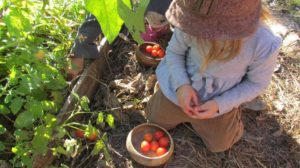 We also offered a one hour”lil sprouts” gardening class for ages 3-5 and their caregiver and an after school gardening club so children that attend school are able to partake in classes as well. In these classes we did some of the same garden activities as the nature school class does. The Children’s Garden and Outdoor Classroom also has put on workshops for adults like basic gardening and learning how to make sauerkraut and beeswax candles. This spring we hosted a community MLK Day of service with the Urban Garden Coalition, a Spring potluck, and a George Washington Carver Story in the Garden.
We also offered a one hour”lil sprouts” gardening class for ages 3-5 and their caregiver and an after school gardening club so children that attend school are able to partake in classes as well. In these classes we did some of the same garden activities as the nature school class does. The Children’s Garden and Outdoor Classroom also has put on workshops for adults like basic gardening and learning how to make sauerkraut and beeswax candles. This spring we hosted a community MLK Day of service with the Urban Garden Coalition, a Spring potluck, and a George Washington Carver Story in the Garden.
Where is the Children’s Garden and Outdoor Classroom?
It’s located at 100 N Oak in Lorena, TX, just outside of Waco. We are in the very big backyard of the business Enchanted Cedar who graciously allow us to use the space. We are one block away from Lorena’s McBryer Park and hiking trails.
What keeps me going?
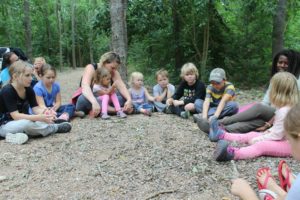 I want all families to know how easy gardening can be and the many benefits it offers to both children and adults. You not only get fresh organic vegetables but also children that are eager to eat them. It’s the easiest way to adopt a healthy lifestyle. There are so many lessons that can be taught through gardening with little effort, you just pick up on them naturally caring for and watching the garden grow. You also get all of the mental and physical health benefits science shows of being immersed and connected to nature and in our busy world that can be very important. In the two years I have been leading classes at The Children’s Garden and Outdoor Classroom I have learned so much from the garden, children, and parents. I’m excited to see what new things the garden has in store. I want to inspire our community to garden, hike, and enjoy the outdoors more in their daily lives.
I want all families to know how easy gardening can be and the many benefits it offers to both children and adults. You not only get fresh organic vegetables but also children that are eager to eat them. It’s the easiest way to adopt a healthy lifestyle. There are so many lessons that can be taught through gardening with little effort, you just pick up on them naturally caring for and watching the garden grow. You also get all of the mental and physical health benefits science shows of being immersed and connected to nature and in our busy world that can be very important. In the two years I have been leading classes at The Children’s Garden and Outdoor Classroom I have learned so much from the garden, children, and parents. I’m excited to see what new things the garden has in store. I want to inspire our community to garden, hike, and enjoy the outdoors more in their daily lives.
Upcoming Events:
 Sauerkraut Make and Take Workshop: June 4th 3pm. Learn to make lacto fermented Sauerkraut and the health benefits of fermented food. Make your own custom sauerkraut to take home
Sauerkraut Make and Take Workshop: June 4th 3pm. Learn to make lacto fermented Sauerkraut and the health benefits of fermented food. Make your own custom sauerkraut to take home
Art in Nature Day Camp June 12 – June 14 9 am – 1pm
Activities include using nature and natural material to paint, sculpt, draw, and craft along with plenty of gardening, hiking, animal care, snack making, and more. For children attending with a parent or guardian this will be a donation based event. There are a limited amount of drop off spots available.
You can find out more about upcoming event, register, or contact the garden:
https://www.facebook.com/childrensgardenandoutdoorclassroom/
 Ashley Stephens lives in Lorena Tx with her son Ajoni and their chickens, ducks, and bees. She homeschools, runs the Children’s Garden and Outdoor Classroom, and works at the Waco Downtown Farmers Market. She loves to garden and backyard homestead. She studied Horticulture and Agriculture at Central Texas College, has a Permaculture Design Certificate, and is a McLennan County Master Gardner intern.
Ashley Stephens lives in Lorena Tx with her son Ajoni and their chickens, ducks, and bees. She homeschools, runs the Children’s Garden and Outdoor Classroom, and works at the Waco Downtown Farmers Market. She loves to garden and backyard homestead. She studied Horticulture and Agriculture at Central Texas College, has a Permaculture Design Certificate, and is a McLennan County Master Gardner intern.
(During December we will be reprising some of “2017’s greatest hits” from the Act Locally Waco blog. I couldn’t possibly pick my favorites – so I used the simple (cop out?) approach of pulling up the 10 blog posts that got the most “opens” according to our Google Analytics. It is an intriguing collection that gives at least a little insight into the interests and concerns of Act Locally Waco readers. I hope this “Top 10” idea inspires you to go back and re-read your personal favorites. There have been so many terrific ones… If you would like to see the Top 10 according to Google Analytics, here’s the link: 2017 Greatest Hits. Merry Christmas! — ABT)
By Mike Stone
 Waco, we have a problem. A recent Trib article (Waco Economy Staggers Despite Promising Signs) highlighted the residential construction boom our city is experiencing, and the surging price of homes due to all of the newly constructed and remodeled homes being built. It is an accurate claim resulting from numerous factors, all of which benefit our city. However, when examining residential construction data for the neighborhoods surrounding downtown we see the opposite.
Waco, we have a problem. A recent Trib article (Waco Economy Staggers Despite Promising Signs) highlighted the residential construction boom our city is experiencing, and the surging price of homes due to all of the newly constructed and remodeled homes being built. It is an accurate claim resulting from numerous factors, all of which benefit our city. However, when examining residential construction data for the neighborhoods surrounding downtown we see the opposite.
The Brook Oaks, Carver, Northeast Riverside, and Sanger Heights neighborhoods all possess a long history of strong people, traditions and homes that have shaped the core of our city. It is a core that’s bleeding, because in the past decade we have lost more homes than have been built. As a result, the people power and economic power of these communities lessen.
THE NUMBERS
According to the last ten years’ worth of data from the City of Waco Permits Department, there have been 334 residential demolitions in these neighborhoods but only 118 new homes permitted. This is in spite of the efforts of numerous Wacoans who have chosen to build homes; private developments such as Cameron Heights; and the work of local non-profit home builders, including Waco Community Development, Waco Habitat and Neighborworks Waco.

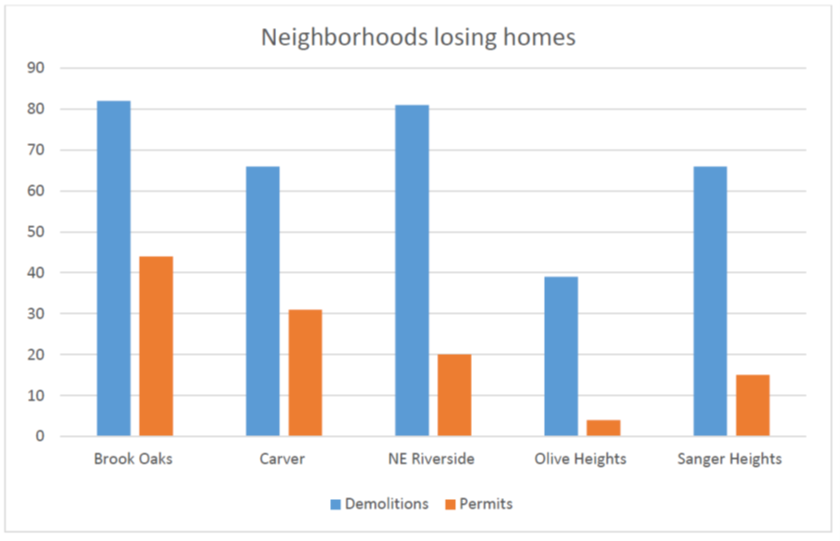
THE PROBLEM
 There is a myriad of reasons for the demolition of homes in the past decade. They include faulty wiring, poor maintenance, fallen trees, and fires. Just next to our office, we lost a 90 year old home due to lightning. The house was hit twice igniting the insulation and destroying the house within minutes.
There is a myriad of reasons for the demolition of homes in the past decade. They include faulty wiring, poor maintenance, fallen trees, and fires. Just next to our office, we lost a 90 year old home due to lightning. The house was hit twice igniting the insulation and destroying the house within minutes.
Losing homes from these neighborhoods will continue as the homes age, but the real problem is the low volume of newly constructed of homes in these areas. We need more homes built to stop the bleeding.
A SOLUTION
 New construction is occurring in concentrated areas of new subdivisions but the growth is on the west side of town far from these core neighborhoods. This strategy of concentrated construction works well for the builders and the buyers because it gives numerous options to create a home within a community.
New construction is occurring in concentrated areas of new subdivisions but the growth is on the west side of town far from these core neighborhoods. This strategy of concentrated construction works well for the builders and the buyers because it gives numerous options to create a home within a community.
A similar strategy has been used in the Brook Oaks neighborhood. Over the past 15 years, the community has experienced a focused effort by numerous builders to construct homes in a targeted area. These efforts were able to effectively slow and almost stop the bleeding within this core of the city neighborhood as shown in the chart below.

In the focus area of Brook Oaks, twenty-six homes were built to replace the 27 homes that were demolished. As opposed to the non-focus area of Brook Oaks where only fourteen homes were built to replace 32 homes that were demolished.
The City of Waco has continued to combat this bleeding with funds from The Federal HUD program. Many of the homes built in the focus area were the result of this investment. A concern is if the current budget proposals from Washington D.C. are followed, this effort will be dramatically curtailed and the bleeding will increase. The current federal budget proposals include major cuts to these HUD programs.
THE CHARGE
We need more homes being built and we need creative solutions to help encourage more new construction in these neighborhoods. How do we entice other builders to build in these core neighborhoods? How do we expand the work the non-profit builders are doing? How do we entice more families to buy more homes in core of the city neighborhood? How do we stop the bleeding?
Waco, we have been tasked with making sure the core neighborhoods of our city thrive. It is my belief that this can be done though a collective effort to build homes in one focus area at a time. Let us band together to stop the bleeding. Let us go help somebody!
 Mike Stone has been the Executive Director of Waco Community Development since November of 2012. Waco Community Development has built 57 new homes in Waco and remodeled 19 homes in their efforts to inspire and cultivate healthy neighborhoods. When not working, you won’t find him, as he will be in the woods somewhere that cell phones don’t work.
Mike Stone has been the Executive Director of Waco Community Development since November of 2012. Waco Community Development has built 57 new homes in Waco and remodeled 19 homes in their efforts to inspire and cultivate healthy neighborhoods. When not working, you won’t find him, as he will be in the woods somewhere that cell phones don’t work.
By Maggie McCarthy
Texans are a fierce bunch. I witnessed this first-hand when the local Veterans hospital was under threat of closure in 2003. The Central Texas community mobilized, a blue-ribbon group was formed, Veterans organized and the citizenry signed up to write letters and plead with Congressmen.
Their red-blooded pride was understandable as the hospital had served Waco and throngs of returning military members since 1932. The campus, with its sturdy brick buildings and handsome terracotta tile roofs, were placed at a bucolic green landscape to allow those suffering the wounds of war to receive health care and comfort as they grappled with their war-weary experiences. It was thought that simply strolling around the grassy loop of buildings could have a therapeutic benefit.
This quest to provide relief to those who bore the brunt of battle, including the psychological impact, is part of the mission that continues today. But back in 2003, it was touch and go.
Luckily, pride, planning, and persistence prevailed. Not only was the hospital spared from the wrecking ball, some parts emerged in a new and improved rendition. The mission was galvanized by a bi-partisan effort to not only keep the campus intact, but to provide specialized services for new and emerging problems.
The Iraq war was less than two years old, but those in active combat were already dealing with the devastation of improvised explosive devices (IED). Unlike their forefathers, who knew the deadly force of bomb blasts, modern military were equipped with protective armor that kept them alive, but with brain damage that might not show up until much later, a condition now known as Traumatic Brain Injury (TBI).
In addition to the physical ills, Veterans carried home the psychological scars of war that were heavier than any of the armor and ammo they could lug. Post-traumatic stress disorder (PTSD), depression, alcohol and drug abuse, and even thoughts of suicide would need special treatment and approaches.
For these men and women, there was a destination that could help probe solutions to these vexing problems that surfaced. But it required highly trained researchers who sought out the best approaches, gathered the data, field tested the theories and shared results in ways that advanced mental health care.
Waco should be proud to have such a place that is a hub of mental health researchers and practitioners. It is called the Center of Excellence for Returning War Veterans and it is part of the VA healthcare system (regionally called VISN 17).
Today, Building 93 on the historic campus maintains it tranquil and traditional exterior, but inside there is a buzz of activity from some 45 individuals who specialize in veteran mental health. One of only three Centers of Excellence in the country, the Waco VA campus was chosen by Congress in 2006 to conduct specialty research on our country’s returning Post-9/11 veteran population, which include Veterans enlisted in any of the military branches during the Operation Enduring Freedom (OEF), Operation Iraqi Freedom (OIF), and Operation New Dawn (OND) campaigns. The signature research focus is PTSD.
There are more than 35,000 unique OEF/OIF/OND Veterans registered in the Central Texas Veterans Health Care System (CTVHCS) and more than 40,000 active duty military service members in the area. An additional 300,000-plus family members (including spouses and children, retirees, and survivors of deceased Veterans) are touched by military matters, according to a recent Fort Hood census.
In addition to grant support from the Department of Defense (DoD) and the National Institutes of Health (NIH), the Center collaborates with Texas A&M and Baylor University, and the Central Texas Veterans Research Foundation, a nonprofit organization that helps facilitate a broad spectrum of Veterans research.
Few people may know the quiet work that is done to understand, and help, those who served. But I, for one, am glad that Waco persevered in saving the hospital. The researchers who daily strive to probe, problem solve and publish their findings may help future generations of Veterans. Then, they too can become the fierce defenders of the people and places that heal.
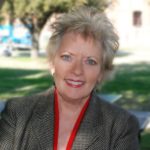 Maggie McCarthy is the Executive Director of the Central Texas Veterans Research Center and has spent more than 25 years managing and consulting with nonprofit organizations, with an emphasis on philanthropic and grant management foundations. As a volunteer, she has helped to support Veterans organizations and the formation of the Veterans One Stop in Waco, Texas. To learn more about CTVRC please visit, www.ctvrf.org.
Maggie McCarthy is the Executive Director of the Central Texas Veterans Research Center and has spent more than 25 years managing and consulting with nonprofit organizations, with an emphasis on philanthropic and grant management foundations. As a volunteer, she has helped to support Veterans organizations and the formation of the Veterans One Stop in Waco, Texas. To learn more about CTVRC please visit, www.ctvrf.org.
The Act Locally Waco blog publishes posts with a connection to these aspirations for Waco. If you are interested in writing for the Act Locally Waco Blog, please email [email protected] for more information.
By Mallory Herridge
Ten students walked across a stage Friday, May 19, with hope radiating in their confident smiles, ready for new beginnings. For eight weeks these students have been a part of Gateway, a rapid-workforce development program offered through Skillpoint Alliance of Waco, a 501(c)3 non-profit organization in Austin, TX that expanded to the Waco area in 2016.
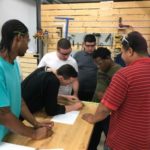 Skillpoint works to connect people to services and industries to achieve self-sufficiency goals. We focus on serving the unemployed or underemployed, specifically (a) opportunity youth (16-24 year-olds who are disconnected from education and employment), and (b) individuals with barriers to employment, including those who have not completed a high school education and those who have been involved in the criminal justice system.
Skillpoint works to connect people to services and industries to achieve self-sufficiency goals. We focus on serving the unemployed or underemployed, specifically (a) opportunity youth (16-24 year-olds who are disconnected from education and employment), and (b) individuals with barriers to employment, including those who have not completed a high school education and those who have been involved in the criminal justice system.
 Gateway is the cornerstone program of Skillpoint Alliance preparing participants to earn industry-recognized certificates, at no cost to the participant, in 4-12 weeks in high-demand industry fields such as Certified Nurse Assistant (CNA), HVAC, plumbing, electrical, and related course extensions. The ultimate goal is for each certification to provide entry to a career that will lead to upward mobility and increased wages.
Gateway is the cornerstone program of Skillpoint Alliance preparing participants to earn industry-recognized certificates, at no cost to the participant, in 4-12 weeks in high-demand industry fields such as Certified Nurse Assistant (CNA), HVAC, plumbing, electrical, and related course extensions. The ultimate goal is for each certification to provide entry to a career that will lead to upward mobility and increased wages.
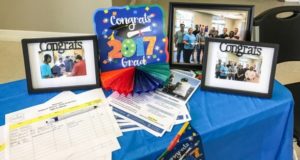 On Friday, our graduates celebrated the completion of their HVAC Gateway program certificate, including their NCCER certification, EPA 608 exam, TDLR HVAC Technician registration, OSHA 10 certification and First Aid/CPR Certifications. But we also celebrated their eight-week commitment and practice of punctuality, job etiquette, resume prep, interview practice, professional communication and team work.
On Friday, our graduates celebrated the completion of their HVAC Gateway program certificate, including their NCCER certification, EPA 608 exam, TDLR HVAC Technician registration, OSHA 10 certification and First Aid/CPR Certifications. But we also celebrated their eight-week commitment and practice of punctuality, job etiquette, resume prep, interview practice, professional communication and team work.
Per Skillpoint tradition, after receiving their graduation certificates, we asked family and friends to come to the stage, stand next to our graduates, and recite the following motto together:
“I affirm that the skills and knowledge gained through the Gateway Program will be utilized to the best of my abilities. I will help others in my community as I am able. I am a person of value and have gifts and talents to offer. I am proud of my accomplishments and look forward to the prosperity of my future.”

 As family members turned each graduate’s tassel, I thought about how strongly these students desire not just a job, but a career that they can be proud of and that will enable them to sufficiently support their families. I thought about how the graduates changed since starting on March 27th. Our shiest, youngest student confidently approached a HVAC employer after the ceremony, networking with her and sharing his career goals. One of our students with multiple offenses on his record had perfect attendance in our class and the Director of Probation showed up to graduation to support him.
As family members turned each graduate’s tassel, I thought about how strongly these students desire not just a job, but a career that they can be proud of and that will enable them to sufficiently support their families. I thought about how the graduates changed since starting on March 27th. Our shiest, youngest student confidently approached a HVAC employer after the ceremony, networking with her and sharing his career goals. One of our students with multiple offenses on his record had perfect attendance in our class and the Director of Probation showed up to graduation to support him.
I thought about our partner agencies such as Goodwill, Caritas, Heart of Texas Workforce Solutions, Esther’s Closet, Centex African American Chamber of Commerce, St. Alban’s Episcopal Church, Maker’s Edge and Communities In Schools that provided resources and support to our students and program in various ways during the class.
I looked around the room and saw employers at graduation who had also taken time to visit our class to share about their companies and what they look for in employees.
As our students thanked them for attending, they were not thanking a stranger and the employers were not just seeing a resume with potential barriers, they were seeing an individual committed to a better life for themselves and their family.
Waco is full of people of value that desire to work. We hope many of our students gain confidence to pursue further training at TSTC or MCC but we look forward to seeing how ALL of our students use Skillpoint Alliance Waco as a stepping stone to start the career and life path of their dreams.
*Special thanks to Rapoport Foundation and Cooper Foundation for their generous gifts and support. Skillpoint Waco will soon expand program offerings to include the Empower program, our 6-weeks digital proficiency classes provided in both Spanish and English and offered at no-cost.
 Mallory Herridge is the Waco Program Director for Skillpoint Alliance. She has lived in Waco since 2002 earning her Bachelor’s degree as well as Master of Social Work (2008) from the Diana Garland School of Social Work and Master of Divinity (2010) degree from Truett Seminary at Baylor University. Prior to joining Skillpoint Alliance, Mallory worked with the Baylor Texas Hunger Initiative utilizing her experiences in social work, community organizing and community building to further public-private partnerships and reduce hunger in Texas. Mallory also served as a Program Manager through Communities In Schools (CIS) creating unique partnerships and collaborations surrounding students with a community of support to success in school. Mallory enjoys being a new mom, and attending her husband’s Mentalism shows at the Hippodrome. Contact Mallory by phone at 254.732.0620 or by email at [email protected].
Mallory Herridge is the Waco Program Director for Skillpoint Alliance. She has lived in Waco since 2002 earning her Bachelor’s degree as well as Master of Social Work (2008) from the Diana Garland School of Social Work and Master of Divinity (2010) degree from Truett Seminary at Baylor University. Prior to joining Skillpoint Alliance, Mallory worked with the Baylor Texas Hunger Initiative utilizing her experiences in social work, community organizing and community building to further public-private partnerships and reduce hunger in Texas. Mallory also served as a Program Manager through Communities In Schools (CIS) creating unique partnerships and collaborations surrounding students with a community of support to success in school. Mallory enjoys being a new mom, and attending her husband’s Mentalism shows at the Hippodrome. Contact Mallory by phone at 254.732.0620 or by email at [email protected].
The Act Locally Waco blog publishes posts with a connection to these aspirations for Waco. If you are interested in writing for the Act Locally Waco Blog, please email [email protected] for more information.
By Ashley Bean Thornton
Several years ago my friend Marianne Stambaugh and I were enjoying the Baylor Homecoming parade when the string of snazzy convertibles carrying the “Outstanding Young Alumni” rolled past. When Marianne and I are together almost everything is funny to us, and this struck us as particularly hilarious. We immediately decided that we would start a group called “Mediocre Middle-Aged Alumni.” Our plan was to insert ourselves in the parade directly behind the Outstanding Young Alumni. We would ride in a caravan of old pick-up trucks, a happy multitude of grey-headed men and women, comfortable in our stretchy pants and matching green and gold “MMAA” T-shirts, sharing some nice snacks, and waving contentedly at the homecoming crowd.
I’m not knocking outstanding people at all. Lord knows we need them. We need some people who poke their heads up above the crowd and see new sights and dream new dreams. We need the people who use their energy, smarts, originality, creativity, hard-headedness or whatever it takes to accomplish things that impress the rest of us. Outstanding people deserve to be celebrated. They are inspiring!
I’ll admit though, that sometimes when I hear about all the brilliant things the outstanding people are doing, it makes me want to take a nap. I don’t have the time or energy to keep up with that. Anyway, it sounds like they have it under control… Don’t we have anything to eat in this house?… I wonder what’s on TV?
In that moment, as inspiration fades in the face of inertia, it’s important to remember that when it comes to making the world – and Waco – a better place, the real power is not with the few “outstanding” ones in the convertibles, it is with us plain old folks in the pick-up trucks. Yes, we ordinary folks who make up the big middle section of the bell-curve of humanity are the ones who hold most of the cards – and most of the responsibility.
For example, the Keep Waco Beautiful awards program is coming up soon. They will be recognizing individuals and groups who have worked especially hard to keep our city clean and beautiful. There are some outstanding individuals who will be recognized, and deservedly so.
Imagine, though, how much cleaner and more beautiful our city would be if, in addition to the outstanding work these few people are doing, a whole herd of us middle-of-the-pack folks consistently did just a little bit of mediocre work. What if 10,000 of us, for example, made it a habit to pick up just one small bag of trash a week. Our city would go from litter full to litter free! (Of course the best thing would be if ALL of us in the middle of the bell curve had the habit of disposing of trash properly in the first place.)
The key word is habit. Habits are what give the multitude of us garden-variety folks our super powers. Occasional big efforts are admirable and exciting, but, honestly, it is the everyday habits of the majority of us average folks that have the potential for making the biggest difference. The water wears away the stone not in one big splash, but by constantly dripping on the same place for a long time.
Small positive behaviors, carried out regularly by a bunch of us run-of-the-mill people can have a bigger effect on the health of our community than occasional heroic efforts by a few. Here are some examples of the kinds of things we could easily be doing…
Take a walk in the neighborhood once a week or more. – If we all get in this habit we will end up with healthier, safer neighborhoods where we know each other better. Those kinds of neighborhoods are the building blocks of strong cities.
Lean toward local. – We don’t all have to take a blood oath to never set foot in a big box store or a chain restaurant, but we can get in the habit of making local restaurants and stores our default choice. Consistently patronizing our local businesses helps them thrive and gives our community it’s unique flavor.
Volunteer a little and give a little – Volunteer for just an hour, but do it consistently once a month or once a week. Even the smallest effort – picking up one bag of trash – done consistently makes a difference. Give $2 or $3 a week to an organization you care about, but give it every week. It doesn’t have to be a huge commitment – an hour or two a month of consistent volunteering or a few dollars a month of consistent giving adds up when enough of us do it.
Our power as members of the middle of the bell curve is not in doing an exhausting amount of good, it is in more of us making a habit of doing a very reasonable amount of good consistently.
So thank you outstanding folks! We appreciate your herculean efforts on our behalf. Now the rest of us have few little things to get done before we take our naps!
 This Act Locally Waco blog post is by Ashley Bean Thornton, she works at Baylor, and helps out with Act locally Waco. She likes to walk. If you see her, honk and wave and say “hi!”
This Act Locally Waco blog post is by Ashley Bean Thornton, she works at Baylor, and helps out with Act locally Waco. She likes to walk. If you see her, honk and wave and say “hi!”
The Act Locally Waco blog publishes posts with a connection to these aspirations for Waco. If you are interested in writing for the Act Locally Waco Blog, please email [email protected] for more information.
By Christine Holecek
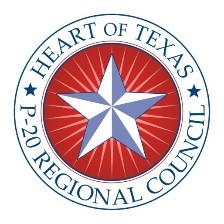 The mission of the Heart of Texas P-20 Council is to assist with the collaboration of education, business, and community to maximize the utilization of resources, programs and services for all students while encouraging a culture of life-long learning. We envision that all students can reach their true potential as happy, healthy, productive and self-sufficient citizens.
The mission of the Heart of Texas P-20 Council is to assist with the collaboration of education, business, and community to maximize the utilization of resources, programs and services for all students while encouraging a culture of life-long learning. We envision that all students can reach their true potential as happy, healthy, productive and self-sufficient citizens.
We believe that achieving college and career readiness allows students to reach their fullest potential. Continual improvement of teaching and learning processes is a key ingredient to success. We also believe that the economic vitality of the region is interdependent, requiring the collaboration of education, business, and community resources.
Below is the HOT P-20 profile of a high school graduate. It is meant to encourage dialogue between students, teachers, counselors, parents and community members in planning for college career and beyond. The HOT P-20 Council, through the *AVATAR Project (a project that invites high school teachers/counselors to meet with Higher ed teachers/counselors to coordinate their work) has adopted this profile utilizing a document created by Waco ISD several years ago. This document provides talking points and suggestions. This document is a work in progress and will be updated annually as part of the HOT P-20 Regional Council strategic.
Profile of a High School Graduate
A responsible decision maker
- Who uses creative problem-solving and conflict resolution kills effectively
- Who uses critical thinking, knowledge and reasoning to effectively evaluate information and make sound decisions
A confident life-long learner
- Who demonstrates mastery of skills in the core content areas
- Who analyzes, evaluates, and applies new information
- Who is an inquisitive self-learner
A healthy individual
- Who practices emotional and physical wellness, including nutrition, hygiene, sexual responsibility, and physical fitness
- Who demonstrates responsible life management skills in social, interpersonal and family relationships
- Who manages time, money, environmental and other resources in a responsible and effective manner
A literate communicator
- Who is proficient in academic and technological skills
- Who effectively expresses ideas using a variety of methods, including written and spoken languages, mathematics, science and the arts
- Who is multilingual
- Who uses appropriate social and interpersonal skills to effectively communicate in a global society
An informed citizen
- Who promotes democratic principles in a multicultural society
- Who demonstrates patriotism and citizenship through community service and participation in the democratic process
- Who understands, respects, and values all cultures
A productive worker
- Who generates quality goods and services
- Who demonstrates adaptability
- Who practices a good work ethic
- Who demonstrates leadership and participation skills
- Who takes ownership of his/her future through goal setting, decision making, and efforts aimed at continual improvement
A well-rounded individual
- Who is guided by honorable values, morals, and ethics
- Who demonstrates an appreciation of, and participation in, the arts
- Who displays genuine global, cultural, and spiritual awareness and respect
- Who is accountable for his/her actions
If you would like to get involved in the conversation or join our initiatives contact our new chair for 2017-2018 school year, Dr. Scott McLanahan. He can be reached at [email protected]. Initiatives for 2017-2018 include Vertical Alignment (AVATAR project), Groundhog Job Shadow Day, Waco ISD/Prosper Waco Internship Program and the Annual State of Education Conference. For more information on the HOT P-20 council: www.hotp20.org.
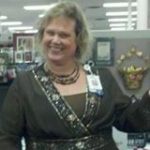 This Act Locally Waco blog post was written by Christine Holecek. Christine is an Education Specialist at Education Service Center Region 12 in Waco. She has worked in the area of Adult Education and Career & Technical Education for the past 25 years. She earned an AAS degree from MCC, a BAAS and Master’s Degree from the University of North Texas and is currently enrolled in the Doctoral Program in Educational Leadership and Policy Studies at Tarleton State University.
This Act Locally Waco blog post was written by Christine Holecek. Christine is an Education Specialist at Education Service Center Region 12 in Waco. She has worked in the area of Adult Education and Career & Technical Education for the past 25 years. She earned an AAS degree from MCC, a BAAS and Master’s Degree from the University of North Texas and is currently enrolled in the Doctoral Program in Educational Leadership and Policy Studies at Tarleton State University.
The Act Locally Waco blog publishes posts with a connection to these aspirations for Waco. If you are interested in writing for the Act Locally Waco Blog, please email [email protected] for more information.
By Craig Nash
Last year was my first summer to help promote the Summer Meals program in the Waco area, and my favorite story from that time was from a midsummer event the Texas Hunger Initiative arranged at Bellmead’s Brame Park. The park is centrally located, has a splash pad to keep kids and families cool during the hot Heart of Texas summer months, and is a stop along La Vega ISD’s “Lunch Bus Express.” After games had been played and balloons passed out, I sat down at the picnic tables to visit with some families and hear their thoughts about the summer meal program. The story of two families in particular have remained with me, and fuels much of my motivation to expand participation in the Summer Food Service Program.
One was a family with three children, accompanied by their parents and an aunt. The dad worked nights and was blurry eyed after taking a quick nap before joining the family at the park for playtime and lunch. Another group of five kids, all siblings and cousins, was there with a grandmother who takes care of them during the summer while moms and dads are at work. Both families seemed close to the other, and I assumed they were connected somehow through church, school or another of the many avenues where we become friends with other people. When I asked how they knew each other, the sleepy-eyed dad said, “Through this. Summer lunches at the park.” The kids all met the previous summer, and the two families have been close ever since.
Food is never just about food, and child nutrition programs are about more than just providing healthy meals to kids. Did you know that one of the most intimate activities you can do with another human is share a meal? It’s why we eat together so much, and why a city the size of ours will never lack of sit-down restaurants. Sitting across a table from another person while participating in the very primal act of fueling your body with nourishment creates invisible bonds that are helpful to survival. Do you want to strengthen your family? Sit down at the table for a meal. Is your church or civic organization needing something to reestablish comradery and affection for each other? You could spend thousands of dollars on a speaker to come talk about the importance of togetherness, or you can schedule a potluck supper and achieve more affect for less money. And if you want to increase the benefits of neighborliness, developing your community into a place where all are welcome and cared for, you can find a way to share a meal with your neighbors.
Summer Meal providers are gearing up to give you an opportunity to strengthen your community, and there is one surefire thing that parents and caregivers of children can do to help them out: Show up. If your child is in need of food, (which, last I checked, is the case for around 100% of all kids,) then the summer lunch program is for you.
I’m particularly excited about a new lunch site this summer. The Waco ISD “Meals on the Bus” will be making a stop at the newly renovated Seley Park. Calvary Baptist Church, located next door to the park, and other community organizations are planning games and activities for kids at various times during the week. Make it a point to stop by and get to know your neighbors. There will be a special kick-off event for this site on June 5th. To follow details, and learn about times for this and other summer meal locations and times, follow “Texas Hunger Initiative—Waco Regional Office” on Facebook, where we will be sharing all that information as it becomes available.
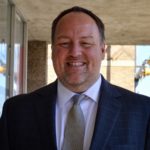 Craig Nash has lived in Waco since 2000. Since then he has worked at Baylor, been a seminary student, managed a hotel restaurant, been the “Barnes and Noble guy,” pastored a church and once again works for Baylor through the Texas Hunger Initiative. He lives with his dog Jane, religiously re-watches the same 4 series on Netflix over and over again, and considers himself an amateur country music historian.
Craig Nash has lived in Waco since 2000. Since then he has worked at Baylor, been a seminary student, managed a hotel restaurant, been the “Barnes and Noble guy,” pastored a church and once again works for Baylor through the Texas Hunger Initiative. He lives with his dog Jane, religiously re-watches the same 4 series on Netflix over and over again, and considers himself an amateur country music historian.
The Act Locally Waco blog publishes posts with a connection to these aspirations for Waco. If you are interested in writing for the Act Locally Waco Blog, please email [email protected] for more information.
